Leading from the Middle: A SPARC Presentation by David Sullivan
At the recent NAIS conference in St. Louis, Missouri, SPARC Senior Advisor David Sullivan presented "Leading from the Middle" in which he discussed the role of auxiliary professionals who work in the middle of an organizational hierarchy. This multifaceted position, often accompanied by unique responsibilities and challenges, can be stressful and lead to discontentment or feeling "stuck." It can also be a position of great opportunity for leadership, innovation, and inspiration.
In this post, we're sharing some of the many effective strategies David shared at NAIS, which he learned and practiced during his career as an auxiliary professional and Head of School. Make sure to check out the two tools mentioned in this post, both free for SPARC members in our Collections file: the Internal Relationship Assessment Tool and the Auxiliary Program Strategic Priorities: Forced Ranking Tool.
THE MIDDLE
You may find that as an auxiliary professional working from the middle, you need to fill a variety of roles that require a deep skill set. The following examples are common qualities of middle children, which may reflect what you experience in your position:
Peacemaker: maintain harmony and may act informally as mediators during conflicts.
Flexible: adaptable and flexible–often have to navigate between the needs and expectations of both those above and below you.
Independent: Being sandwiched in the middle but have a sense of independence and self-reliance.
Social: possess strong social skills, interact with a wide range of people.
Creative: often have to seek alternative means to get things done while working in the confines of the organization.
Recognition: sometimes feel overlooked or neglected in comparison to others in your organization.
Adaptive: adapt to changing circumstances and environments that are always shifting and expectations always changing.
This fluid and demanding position can also coincide with how people experience middle age:
Increased Responsibility: Experience a peak in responsibilities, including professional demands, financial/organizational pressures, and “care” for those above and below you. Wish sometimes that you did not have so much responsibility and could go back to a former position.
Stability: Many middle leaders have established stable careers and professional relationships, while also having achieved a certain level of financial and personal stability. You are doing okay professionally.
Self-Reflection: Middle leadership prompts individuals to reflect on their accomplishments, goals, and life purpose, leading to introspection and reevaluation of priorities.
Physical Changes: As the increased demands and responsibility sets in, many middle leaders become more focused on (or concerned about) maintaining their health through exercise, diet, and regular medical check-ups. It is stressful.
Career: While you have acquired wisdom and competency in what you do, feelings of dissatisfaction, regret, or a desire for significant change rise up more that they used to. Concerns that you may have made some wrong choices and worried about getting “trapped”--this is what I am and do now.
Reevaluation of Relationships: Middle leaders may reevaluate relationships and find that the way they relate to people has changed: peers are now subordinates or superiors, need different mentors and trusted colleagues, generally seek deeper connections and fulfillment in their professional interactions.
LEADING IN: CENTERING YOU

How would you define your particular role within your school's hierarchy? How are you working to achieve the school's mission? Consider writing a mission statement for your program that aligns with the school's, but creates more clarity and sense of purpose for you and your team.
Questions that can help you describe your role and how you fit within your organization include:
What are the unique elements of your position?
Where are you positioned and how do you operate in your school?
What should people at your school know about what you do?
Who is your “so and so”? Do you have one?
Whom do you rely on?
Who is your team? Or teams?
How is your program viewed and treated in your school?
From your position, what does your org chart look like?
What is your job description? In what ways is it accurate, or how does it fall short of identifying your actual responsibilities?
Consider rewriting your job description if you feel something is missing to add clarity and focus to your role and ensure you’re being evaluated on what you actually do. It can also help elevate your stature and make you more visible, ensuring you receive credit for your ideas and hard work.
As you think about your role, consider these fundamental roles of middle leadership. Which one(s) best describe(s) you?
The Translator
Translate the organization’s/leader’s highest priorities into actions and systems that get the desired results. Make sure your team understands the purpose and the “why”. Conversely, translating the reality, resources and steps needed, and needs of the team to leadership. What matters above you? What matters below you?
The Coach
Recruit talent, build a team, and develop people. Also “coaching up”: understanding, support, perspective, teaching, truth teller, etc. Coaching peer players as well–how they could improve to help the objectives of the bigger team, how they could be good team mates, etc.
The Builder
You create and are accountable for getting it done. Measuring execution (quality, safety, profit, etc.) against the goals and objectives. Like a builder is accountable to others (clients, architect, inspectors, codes, best practices, laws of physics, etc.), Middle leaders often need to work with many others within the organization to be successful. In the end, success might be measured by getting job done, not recognition.
The Fixer
You solve problems. Like it or not, middle leaders often end up fixing mistakes or compensating the shortcomings of others. Middle leaders will see where the pinch points are–often more keenly than who they report to. That unique perspective can be maddening but it is also privileged and could be leveraged.
What is your leadership style? Do you fall mostly into one category, or several? The best approach may be to change your style based on the context and what would best help you meet your objectives.
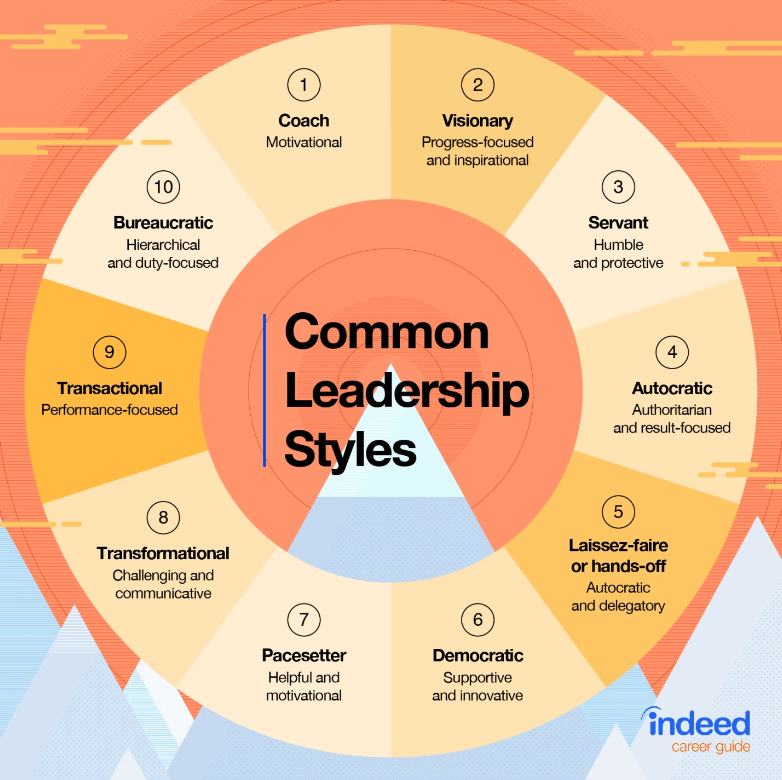
Weighing the risks of a decision or action–it is a balancing act.
Whatever your leadership style, decision-making requires thoughtful consideration on several fronts. Before taking action (or not), think through the potential risks:
|
Optics Risk |
Regulatory Risk |
Role Model Risk |
Integrity Risk |
|
What if this ended up on the front page of the newspaper? Reputation is the most valuable intangible asset of a school. What is harmed by the issue hitting the front page and how will you manage it? |
What does your lawyer advise?
Knowing the perspective of the school attorney (and sometimes insurance company) are important to know. Keep in mind, however, that sometimes it may not be the best course to follow their advice. |
What would your students think?
Your students and community are watching–is your decision or action consistent with the organization’s core values? Are you modeling behavior you want your students to respect and aspire towards? |
What does your gut tell you?
Sometimes the answer lies in following your instincts. So many variables and intangibles can sometimes be at play. At some point, after all the analysis and rational consideration is done, you go with your best guess. |
LEADING IN: YOUR TEAM
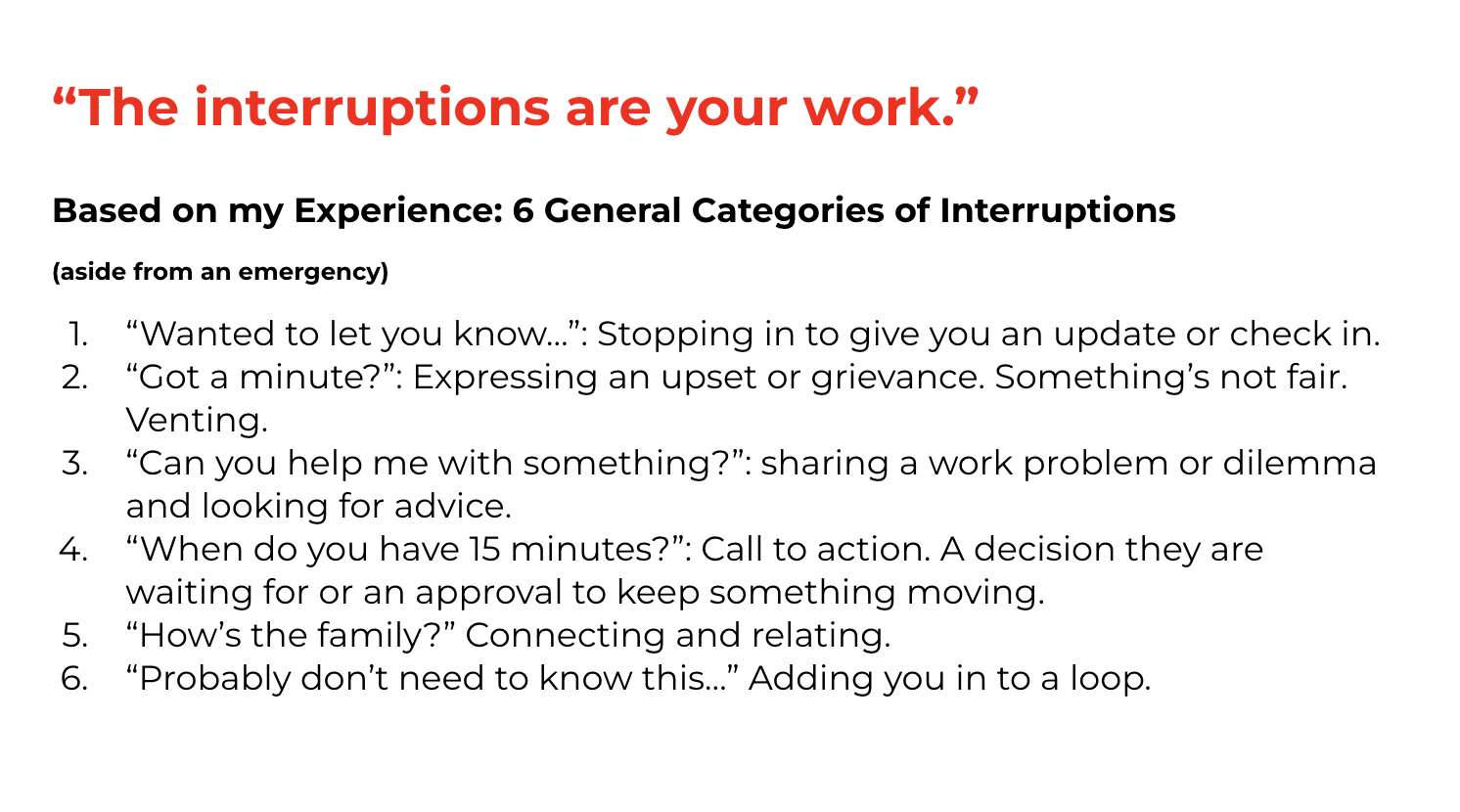
While interruptions from your team feel like they can get in the way of your work, they are in fact opportunities for you to lead and connect with your team members. Like leadership styles, interruptions often fall into categories, which can help you determine the best approach.
A Portfolio of Coaching Responses: Where to start when a team member approaches you.
“Help me understand that.” Challenge an assumption or narrative one is telling themselves.
“Tell me more.” Be curious and make sure you fully understand.
“Why?” Keep asking to reflect it back to them.
W.A.I.T. Why am I talking?
Here are several types of interruptions you may experience, with possible responses, including what to look out for:
1. “Wanted to let you know…”
This might be the “send me in coach” person:
- Seeking affirmation and feedback
- Wants to know they are important on the team and add value
Approach: Use your words—positive, encouraging, affirming words. Your words have power–think of a tennis racquet…
Careful: You don’t give someone who is actually underperforming the wrong message.
2. “Got a minute?”
Wants to express themselves. Wants to be heard.
Approach: Clarify what they expect from you (take action or just listen). Listen—the information could be very valuable. Repeat back the concerns so they feel heard. (It’s not about feeling their feelings, just knowing what their feelings are.) This is an opportunity to show you care and have empathy. Consider assigning homework.
Be careful of inadvertently agreeing or being complicit. Will you need to set boundaries?
3. “Can you help me with something?”
Yes! Person is asking for help. Maybe there is safety for this person in seeking you out as a resource.
Approach: Listen and ask clarifying questions. This is an opportunity to be a coach and thought partner. Consider homework. Decide how far you will go to help.
Be careful and watch out for the monkey! Is the person delegating up to off load work? Don’t inadvertently take away a growth opportunity for them.
4. “When do you have 15 minutes?”
This might be the industrious person who is organized. They are trying to be respectful of your time. They may be looking for a decision or something actionable.
Approach: They are managing you! They are leading up! They are being respectful. Recognize it and encourage it. Be grateful they are keeping the ball rolling.
Be careful because they are managing you. Make sure you stay true to your decision process and don’t let them drive you. The person may need clarity around timelines or boundaries (especially if the decision is none of their business).
5. “How’s the family?”
Or “How are you” with a sincere look of concern. This person is trying to connect and wants to relate to you. May be a person who enjoys their work better when they feel a level of intimacy with others.
Approach: An opportunity to be approachable, show empathy, and be vulnerable. Maybe satisfy their need to connect.
Be careful to determine your own comfort level and remember who is asking. Connect but consider keeping the focus on work and engage others in it. Expressing your true emotional state, like it or not, will not always be productive. Watch out for time wasters.
How are you?
"Great! This is what I am working on…"
"Really tired. This is what I have been working really hard on…"
"So frustrated. This is a tough problem I have been working on…"
6. “Probably don’t need to know this…”
This person likes transparency and likely enjoys being in the know. They might be the one who bcc’s you on an email chain you were not aware of, or makes sure you know something positive (i.e. teacher so and so just got engaged). Doesn’t want you to be the last to know.
Approach: Appreciate that they are giving you a “heads up” and supporting you by supplying intel. Could be a highly valuable source of information. Don’t shoot the messenger (don’t react negatively to bad news—appreciate them for delivering it).
Be careful and consider the source. Maybe shoot the messenger. Don’t get dragged into something. Watch out for someone stirring a pot.
Ideally, through effective leadership, a fuctional team will develop mutual trust, rely on each other for support, engage in clear communication, and understand both their goals and what their individual tasks are to achieve those goals.
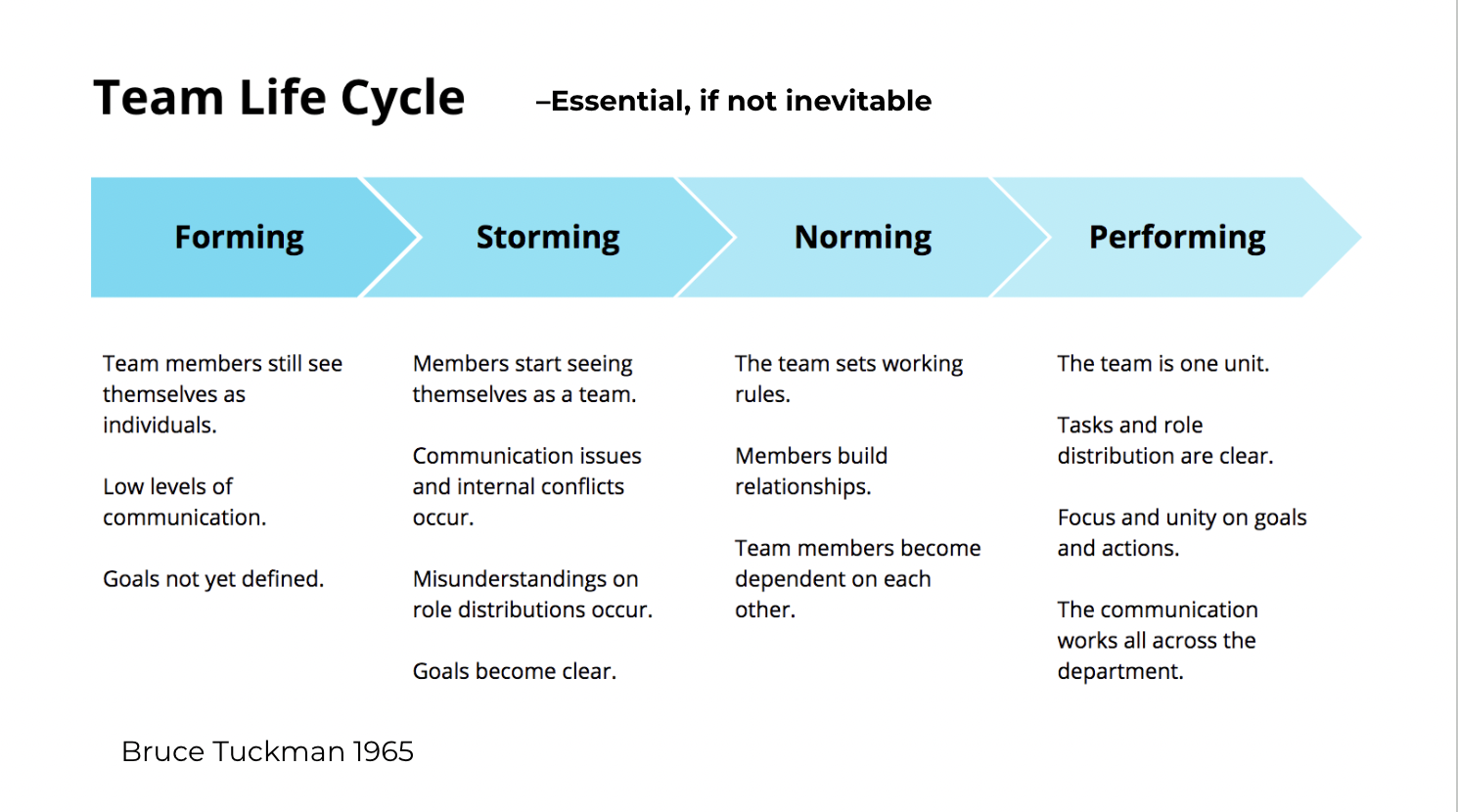
LEADING AROUND
How are you integrated within the school, in terms of:
- Departmental interaction
- Essential allies throughout the school
- Committees - formal and informal
- Visibility–how do you weave yourself into the organization?
In what ways do you want autonomy?
- Where do you want some independence?
- When do you want to be left alone?
- What power do you want?
Use SPARC's Internal Relationship Assessment Tool, free for members, to determine how close or far you are from your ideal relationship with each department:

If, like in the above chart, there is a gap between your ideal and your actual relationship, ask yourself what the reason(s) may be:
Why does the gap exist?
-
Roles understood?
-
Structure for Communication?
-
Personal?
-
Inertia?
-
Common understanding of priorities?
-
Understand importance of relationship from your perspective?
-
Historic event?
-
Operational structure missing?
“It only takes one person to make a relationship work!” You can take the initiative to create healthier and more functional relationships.
Asking for help is often an effective strategy to build bridges with others and get the help you need from another department.
“I need your help.”
Follow up with an objective. Then engage in the problem together…
“I need your help with something. The priority is to increase revenue this summer and we can do that if we can figure out a way to use the buildings for another week. Do you have thoughts on how to do this?”
Then, if you have to, make the specific ask.
Keep in mind:
- You can’t rely on the fact that the other person should or has to help you.
- Ask how can you help them and show you want to help them.
- Tie your ask to the overall success of organization.
LEADING UP

From the NAIS Hot Issues Survey, 2022
Everything you do as a leader also applies as a follower. Think of leadership as a throughline--by supporting and encouraging your team to lead up to you, you will make your job easier and be more successful.
Consider what matters to the people above you as well as what matters to those below. Lead up to those above through:
- Honest communication.
- Respect, honor, and service--publicly have their back.
- Think critically, rather than being critical. Come with solutions and consider intent before content.
- Lighten your leader's load. Take the initiative to find important things to do and to do what others won't.
- Avoid judgments and judgmental words.
Set clear priorities even if your school doesn't. Get the HOS/CFO on board with these priorities, and always put your program's goals--tied to the school's goals--at the top of every report.
Frame your objectives in a way that shows how you are helping the school and your leader succeed.
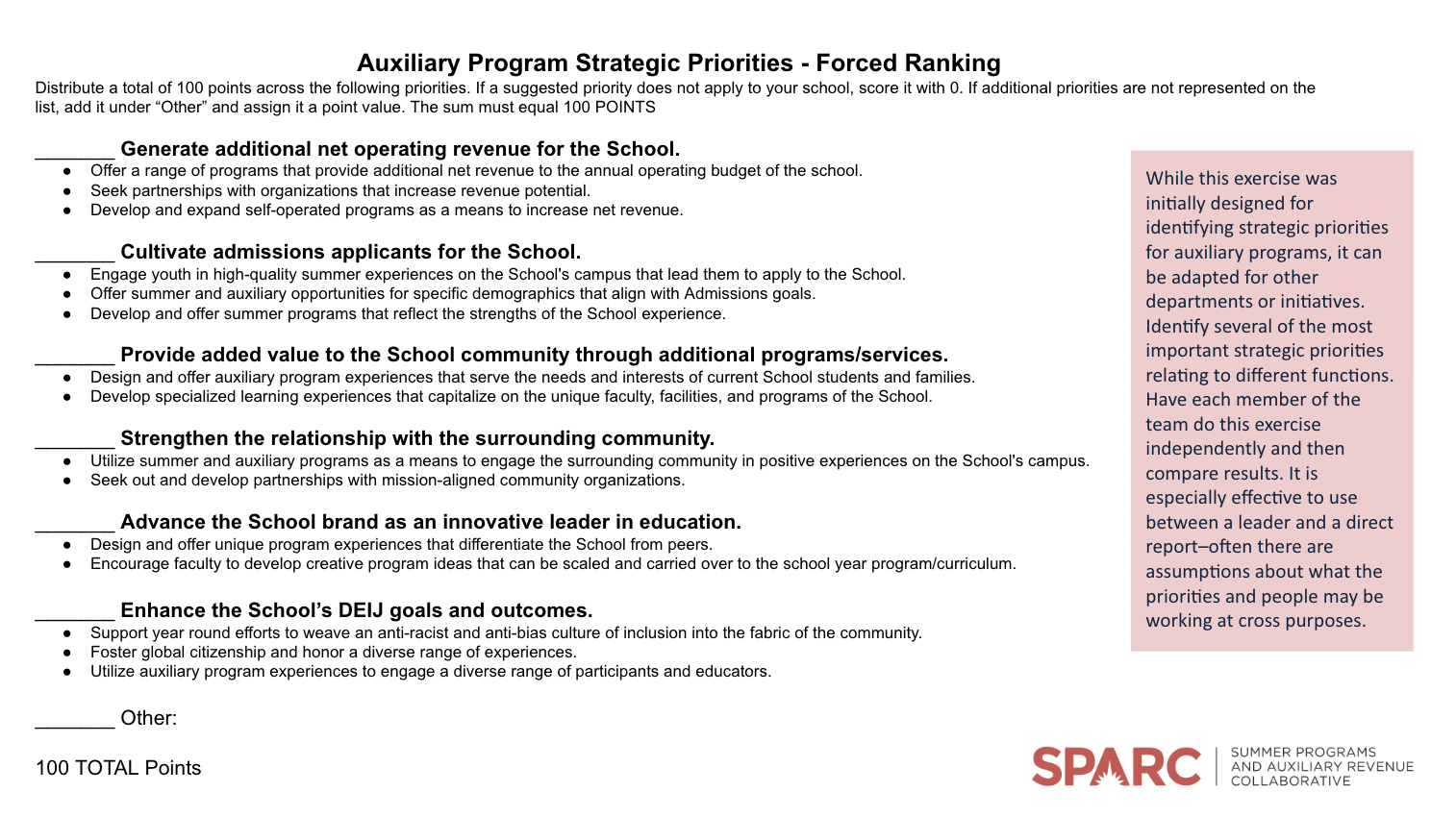
Use SPARC's Auxiliary Program Strategic Priorities-Forced Ranking Tool to determine and prioritize your program's objectives.
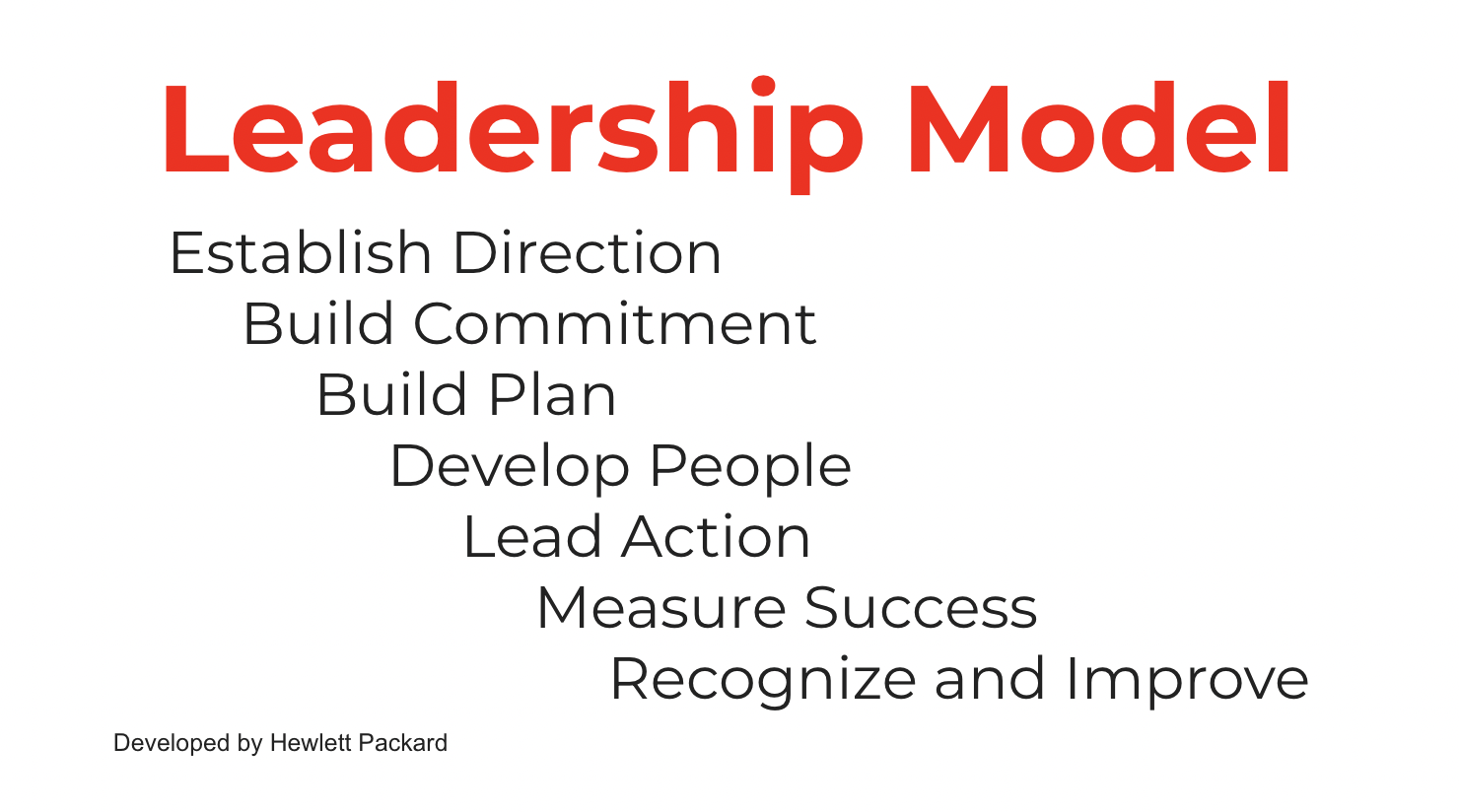
Principles of Good Practice--Equity and Justice, for Auxiliary (based on the NAIS Principles of Good Practice--Equity and Justice)
- Auxiliary establishes the foundations for its commitment to equity and justice in its defining documents (mission, core value, and/or philosophy statements).
- Auxiliary respects, affirms, and protects the dignity and worth of each member of its community.
- Auxiliary articulate strategic goals and objectives that promote diversity, inclusion, equity, and justice in the life of the program.
- Auxiliary develops meaningful requirements for cross-cultural competency and provides training and support for all members of its community, including parents, students, and all school personnel.
- Auxiliary holds itself accountable for living its mission by periodically monitoring and assessing culture and ongoing efforts in enrollment, hiring, retention, financial aid, and curriculum development.
- Auxiliary works deliberately to ensure that the staff and student body reflect the diversity that is present in the rapidly changing and increasingly diverse school-age population in our country.
- Auxiliary uses inclusive language in all written, electronic, and oral communication.
- Auxiliary adopts a nondiscrimination statement applicable to the administration of all of its programs and policies, in full compliance with local, state, and federal law. That said, the school makes the law the floor — not the ceiling — for establishing itself as a diverse, inclusive, safe, and welcoming community for all students, staff, and families.
LEADING THE WAY - Final Thoughts
- Be the change–create a microcosm of what you want the rest of the school to be like.
- Lead the school on leading–don’t wait with what matters.
- Cultivate those skills, dispositions, and capacities that prepare you for the future.

